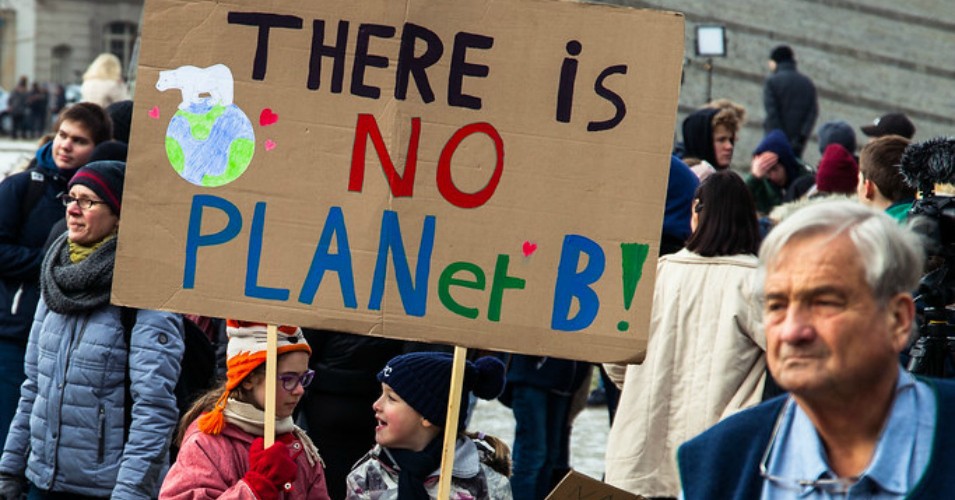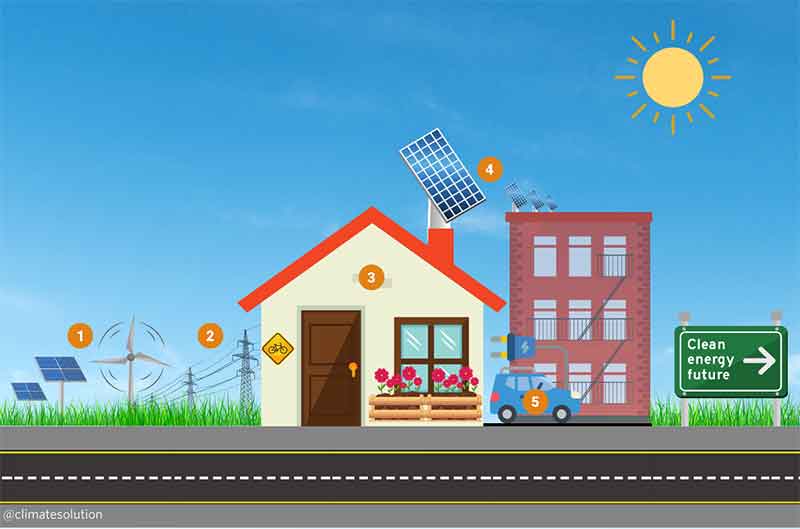
The United States is moving fast on climate change—in the wrong direction. The Energy Information Agency forecasts that by 2023, the nation will set a new annual record for oil extraction: 4.6 billion barrels. Plans to build more than 200 new natural gas power plants are in the works. More than 130 new oil and gas pipelines now under development will carry enough fuel to increase national emissions by 10 percent—560 million metric tons per year.
Now, freaked out by high fuel prices, the Democratic majority in Congress is pushing to accelerate this fossil fuel rush while President Biden rushes, hat in hand, to Saudi Arabia, forgetting that the kingdom is supposed to be a pariah. Furthermore, as Robinson Meyer recently wrote in The Atlantic, the party’s leadership seems blissfully unbothered by the fact that Congress has failed to pass even the weakest of laws to curb climate catastrophe. And if the Democrats—having been unable to defend either voters’ rights or life on Earth over the past year and a half—lose their congressional majority to the oily authoritarians in November, our already dim hopes for the federal government to reverse course and start phasing out fossil fuels could fade away altogether.
If that nightmare scenario unfolds, local and regional activism will not only become more essential than ever; it could be the nation’s only route to climate mitigation and adaptation. As the republic teeters on a knife edge in coming months, “In Real Time” will be recognizing grassroots movements across the country that stand as exemplars for collective climate action. Climate is not always the chief focus of such struggles, but the movements’ strategies and methods are deeply relevant.
I’ll begin this month with two such examples: Native struggles against fossil fuel infrastructure and the Los Angeles Bus Riders Union.
Keeping Turtle Island’s oil and gas in the ground
Last year, the Indigenous Environmental Network (IEN) and Oil Change International reported on seventeen struggles against fossil fuel infrastructure across North America that were either ongoing or had already succeeded. The potential impact of such actions on greenhouse gas emissions, they concluded, was staggering. “If [all of] these struggles prove successful,” they wrote, “this would mean Indigenous resistance will have stopped greenhouse gas pollution equivalent to nearly one-quarter of annual total U.S. and Canadian emissions.” An emissions reduction of that size would be like shuttering 400 coal-fired power plants or taking 345 million passenger vehicles off the road—more than all the coal plants or cars in North America. IEN wanted the continent’s governments and citizens to do one thing:
[R]ecognize the impact of Indigenous leadership in confronting climate chaos and its primary drivers. We hope that such settlers, allies or not, come to stand with Indigenous Peoples and honor the inherent rights of the first peoples of Turtle Island—the land currently called North America—by implementing clear policies and procedures . . . and by ending fossil fuel expansion once and for all.
Here are just a few of the campaigns included in IEN’s analysis:
The infamous Keystone XL pipeline project, which would have carried oil from Canada’s tar sands south through the United States, was finally killed in 2021 after a years-long struggle led by Indigenous communities on both sides of the border.
The White Earth Band of Ojibwe continues trying to shut down the 340-mile-long Line 3 oil pipeline in Minnesota, which has already severely damaged at least three aquifers. On March 20, 2022 in the worst incident, 300 million gallons of groundwater spilled from the aquifer. The battle continues.
In 2016, the Standing Rock Sioux Tribe prevailed in the epic struggle they had led against the Dakota Access oil pipeline, but their victory in the face of appalling state violence was overturned the next year by the Trump administration. Now, tribal groups and white landowners are applying lessons learned in that struggle to block a different kind of pipeline in the same part of the country: the 2,000-mile Midwest Carbon Express Pipeline. The purpose of the pipeline would be to pump carbon dioxide collected from refineries producing climate-unfriendly fuel, ethanol, to underground storage sites throughout the region. The pipeline would not only cause extensive ecological degradation, it would also be a threat to human health in the areas it traverses.
Indigenous communities and their allies succeeded in completely scuttling a proposed Atlantic Coast Pipeline through West Virginia, Virginia, and North Carolina. Although only about 1 percent of North Carolinians belong to Indigenous communities, an estimated 13 percent of people who would have been harmed along the pipeline’s route through the state identified as Native American.
The Trans-Pecos gas pipeline runs about 150 miles through Texas out of the Permian Basin, home to gargantuan reserves of oil and gas that, if burned, could produce 60 billion tons of carbon dioxide—roughly equivalent to a year and a half of humanity’s total carbon dioxide emissions from all sources. The Society of Native Nations has contested this pipeline from the start, significantly slowing but so far not halting the pipeline’s construction or operation.
Native communities, says IEN, will continue “fighting through lived values and principles to keep fossil fuels in the ground and protect Turtle Island.”
In the front of the bus
Preventing climate catastrophe requires not only keeping oil in the ground but also keeping private vehicles off the streets and compensating for their absence with public transportation, bikeways, and walkways. Car use has been reduced this way only in a limited number of places in the United States. And people who have low personal carbon emissions because they can’t afford the many costs of car ownership are obliged to commute, often over long distances, in rundown, crowded buses that might show up at your stop once an hour, if you’re lucky (and that cost more every year to ride). Fixing public transportation needs to be a fast-lane issue for both climate mitigation and protecting human rights.
For 30 years, the Los Angeles Bus Riders Union has been fighting the racism that they argue is built into the city’s public transit. It’s an epic struggle, still far from over. In a report from the 1990s, the union noted that the city’s dirty, dilapidated buses, many providing unreliable service to low-income areas, carried 350,000 riders per day, more than 80 percent of them Latinx, Black, or Asian/Pacific Islander. Meanwhile, the city’s clean, new rail system was carrying only 26,000 riders per day, a majority of them white and middle class. Public subsidies were less than a dollar per bus passenger, compared with $5 to $25 per rail passenger.
Based on this and other evidence, the Bus Riders Union accused the L.A. Metropolitan Transit Authority of taking funds intended for the bus system and using them to cover construction and operation expenses for the always over-budget and underused rail system. Union founder Eric Mann wrote at the time that these disparities grew out of a longstanding philosophy within the bus system. It was, he said,
based primarily on the importance of the “choice rider.” According to this line of argument . . . the main purpose of public transportation is to reduce congestion and auto emissions. Thus, it would be precisely the suburban car rider who would be targeted to ride public transportation. According to this argument, the choice rider who lives in the suburbs and prefers to drive his/her car must be attracted by better and more convenient service. On the other hand, according to the theory, services do not need to be attractive to gain the ridership of the transit-dependent since, by definition, they have no choice.
In 1994, the union took the MTA to court to block further fare increases and service cuts, accusing the agency of violating a law that forbids using federal public transportation funds in a racist manner. The court sided with the union, issuing a consent decree under which the parties were to negotiate a plan. Dubbed “Billions for Buses” by the union, the plan eventually lowered fares, replaced high-polluting diesel buses with new ones run on natural gas (no electric buses were available then), and added a million hours of annual service. But when the consent decree expired in 2006, MTA went back to raising fares and cutting service.
Tired of being taken for a ride by the city, the union scored another big upset victory in 2012, when it organized a get-out-the-vote coalition to defeat a ballot initiative called Measure J. Had it passed, Measure J would have allocated $90 billion of local government funds to rail and highway projects. It included freeway expansion in the already freeway-choked city. Mann wrote that passage of Measure J also would inevitably have led to “crippling fare increases and services for the city’s bus riders,” whose numbers had risen by then to half a million, and who had a median income of only $14,000 per year. More than 80 percent continued to be people of color.
The defeat of Measure J was a big victory, but a decade later the struggle continues. Last year, Bus Riders Union organizer Channing Martinez wrote about how the MTA had continued its abuse of low-income residents, even scuttling a plan that would have provided free public transportation for K-12 and community college students. He laid out the union’s strategy for carrying on the struggle into the 2020s: continue spending lots of time riding the buses to organize, make more alliances, and keep the heat turned up on local officials.
The transformation of L.A.’s public transit is not yet a reality. Bus ridership was falling even before COVID-19 struck, thanks to a classic feedback loop. The city’s infamous, and increasing, traffic congestion bogs down buses even more than cars, leading more bus riders to go back to driving.. Congestion then gets worse, and the bus system loses even more riders.
Public transit advocates told the Los Angeles Times that “the only lasting solution . . . is to carve out space for buses on major streets using bus-only lanes and bus rapid transit.” That would improve bus service immensely and leave less space for driving and parking cars, prompting more people to take the bus. These and other solid policies are needed to accomplish what the Bus Riders Union has been demanding for three decades: an adequate system of low-emissions buses providing high-quality service to the whole city—especially to the low-income communities who have always contributed the least to global warming.
Whether it’s carried out by a local movement such as the L.A. Bus Riders Union or continent-spanning drives like the Native campaigns against Big Oil and Gas, no single effort can snuff out fossil fuel extraction and consumption on its own. In the absence of a federal phase-out, however, a multiplicity of grassroots efforts like these and others, popping up and spreading across the country like bermudagrass in June, are more essential than ever.
This essay was originally published by City Lights Books as part of its “In Real Time” series. Listen to the “In Real Time” podcast for the spoken version of the series and to the Anti-Empire Project podcast. Also see the evolving “In Real Time” visual work.
Stan Cox is the author of The Path to a Livable Future (2021) and The Green New Deal and Beyond (2020).













































